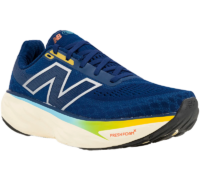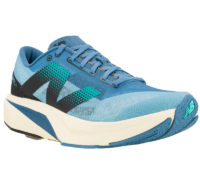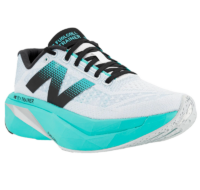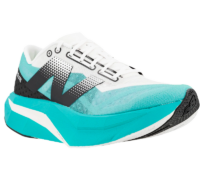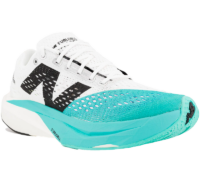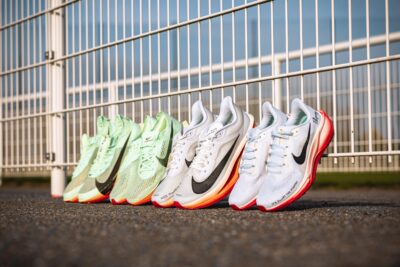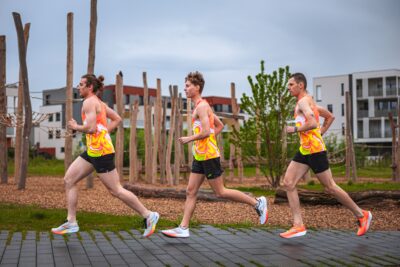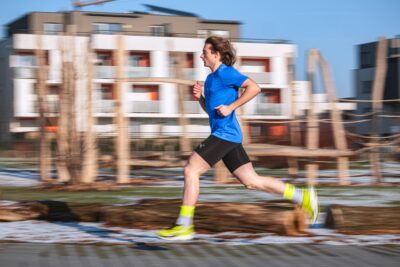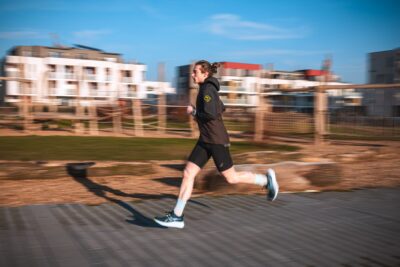Blog
Guide: New Balance - The best running shoe models
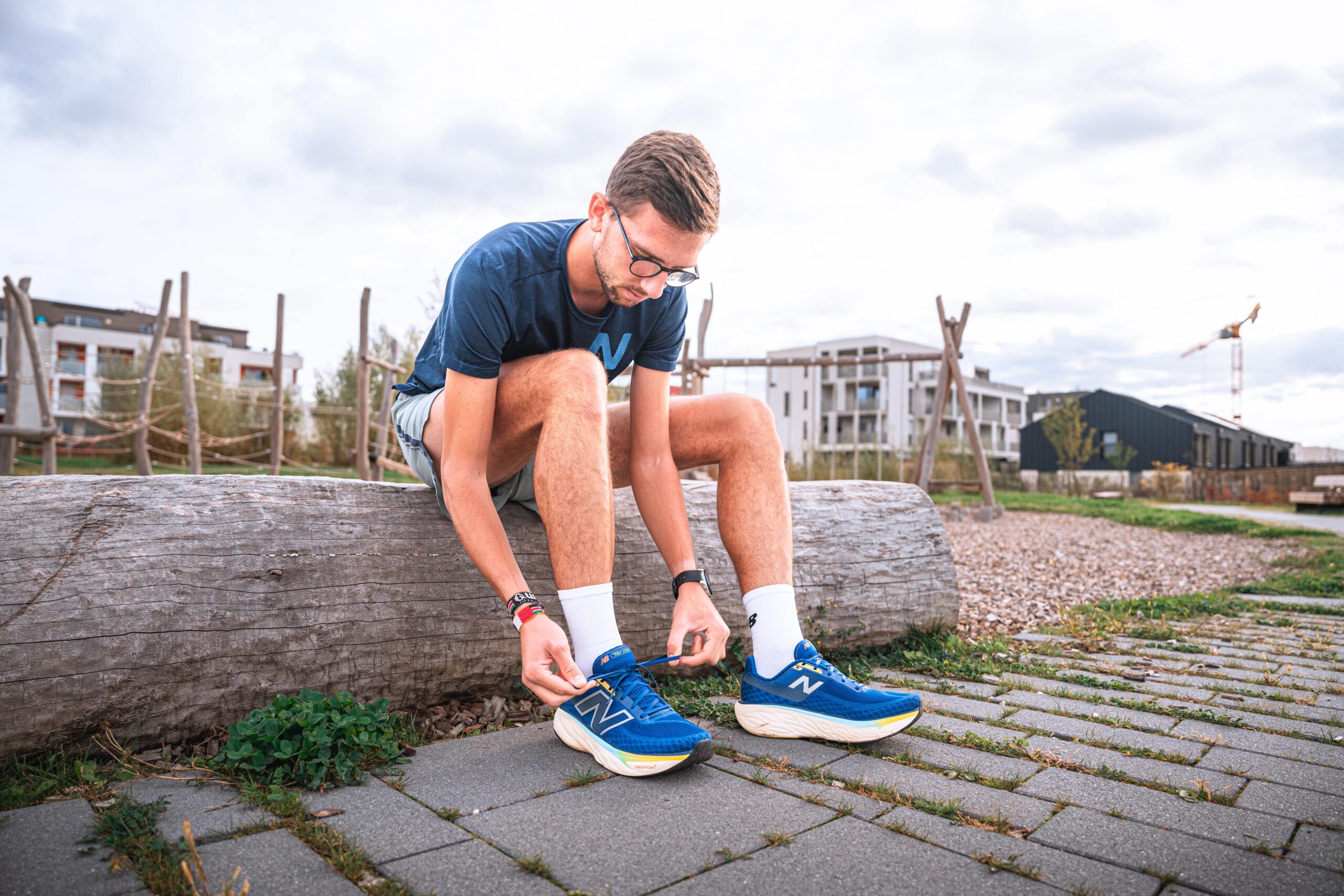
Shoe rotation means using two or three different models in your training week. Having a shoe rotation for daily running has four important advantages, here are the reasons why it can be beneficial:
Each pair of shoes offers a different level of support, cushioning and energy return. Alternating between different pairs allows you to use different muscles and tendons, reducing the risk of overuse of any one part of your body. This can help prevent injuries such as tendonitis, plantar fascisitis or knee pain.
By alternating shoes, you give them more time to recover. After a workout, the cushioning and structure of the shoe need time to return to their original shape. If you let a pair rest for 24 to 48 hours before using them again, this helps to preserve their properties, prolonging their lifespan.
Different conditions (weather, terrain, type of training) sometimes call for specific types of shoes. For example, a lighter, more dynamic pair for fast sessions, a pair with more cushioning for longer or slower workouts. A rotation allows you to adapt your shoes to the conditions and type of effort.
You optimize the effectiveness of your sessions. For example: light, responsive shoes for splits can improve your performance, while more cushioned, maximalist shoes can reduce muscle fatigue over longer distances.
Here is our favourite NEW BALANCE shoe range according to training and competition:

Jogging and daily training :
New Balance Fresh Foam X 1080 v14
(a team favorite 🩵)
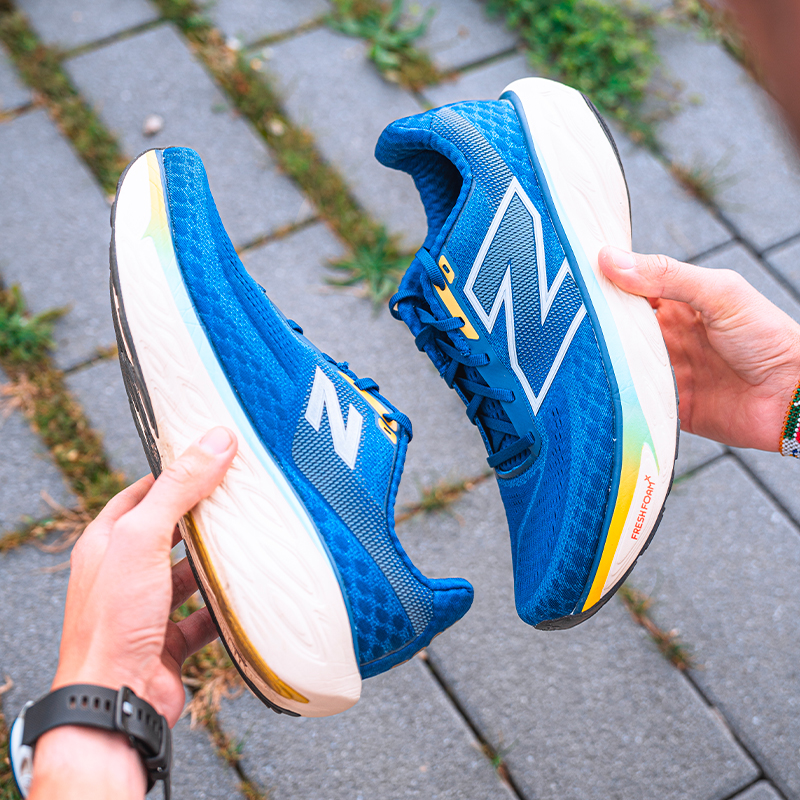
Technical specifications :
- 298 grams
- 6 millimetre drop
- No carbon plate
- Selling price: €190
- Daily use: jogging and long outings

Comfortable, excellent cushioning, good durability, accessible to all, versatile

Lack of dynamism, high weight
Read our full test & review :
New Balance Fresh Foam X Balos

Technical specifications :
- 260 grams
- 6 millimetre drop
- No carbon plate
- Selling price: €220
- For jogging and long outings in maximum comfort

Maximum comfort, muscle-saving exercise, extremely soft cushioning, lightweight feel

Limited durability, very high price, lack of foot stability
Read our full test & review :
New Balance FuelCell Rebel V4
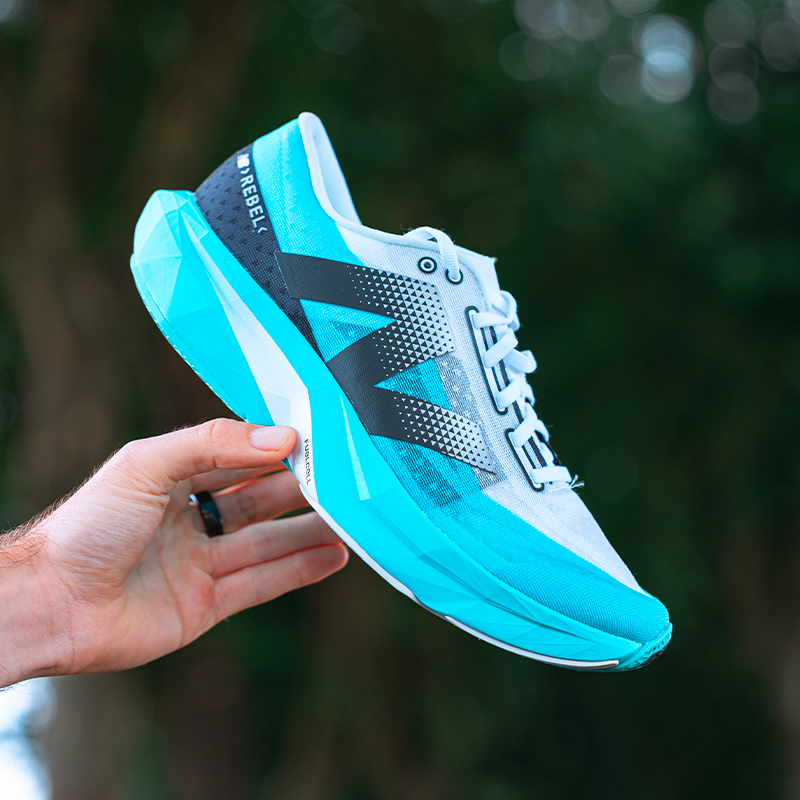
Technical specifications :
- 196 grams
- 6 millimetre drop
- No carbon plate
- Selling price: €160
- Daily training for rhythmic outings without carbon plates

Lightweight, versatile, good value, dynamic

Stability
Read our full test & review :
New Balance FuelCell SC Trainer v3
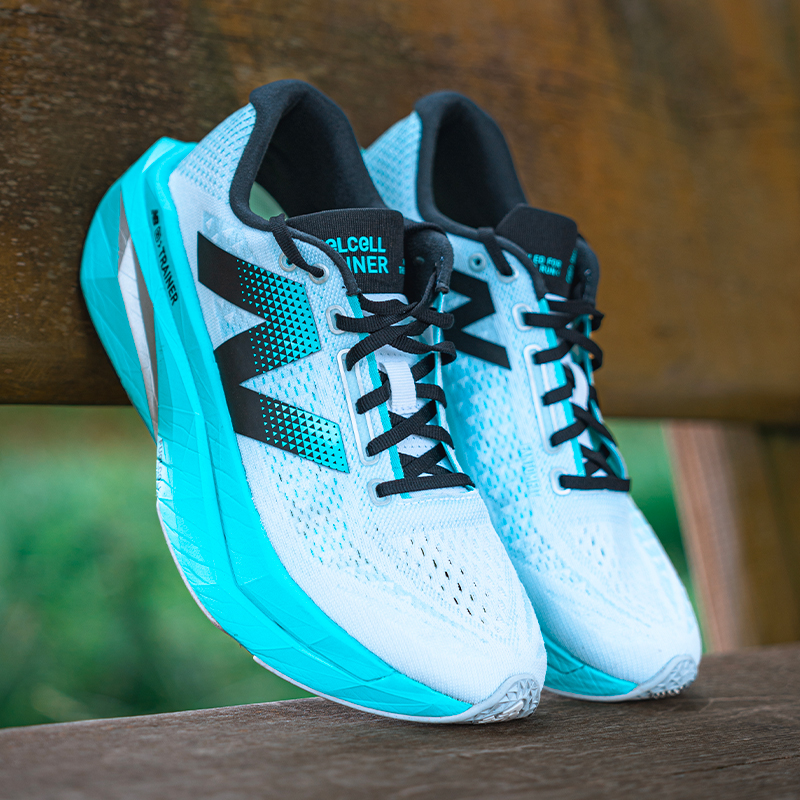
Technical specifications :
- 260 grams
- 6 millimetre drop
- Carbon plate
- Selling price: €160
- Use: Long outings as part of marathon preparation, for example, to save muscle.

Cushioning, comfort, muscle-saving and durability

Lack of dynamism, high price, and poor wet grip
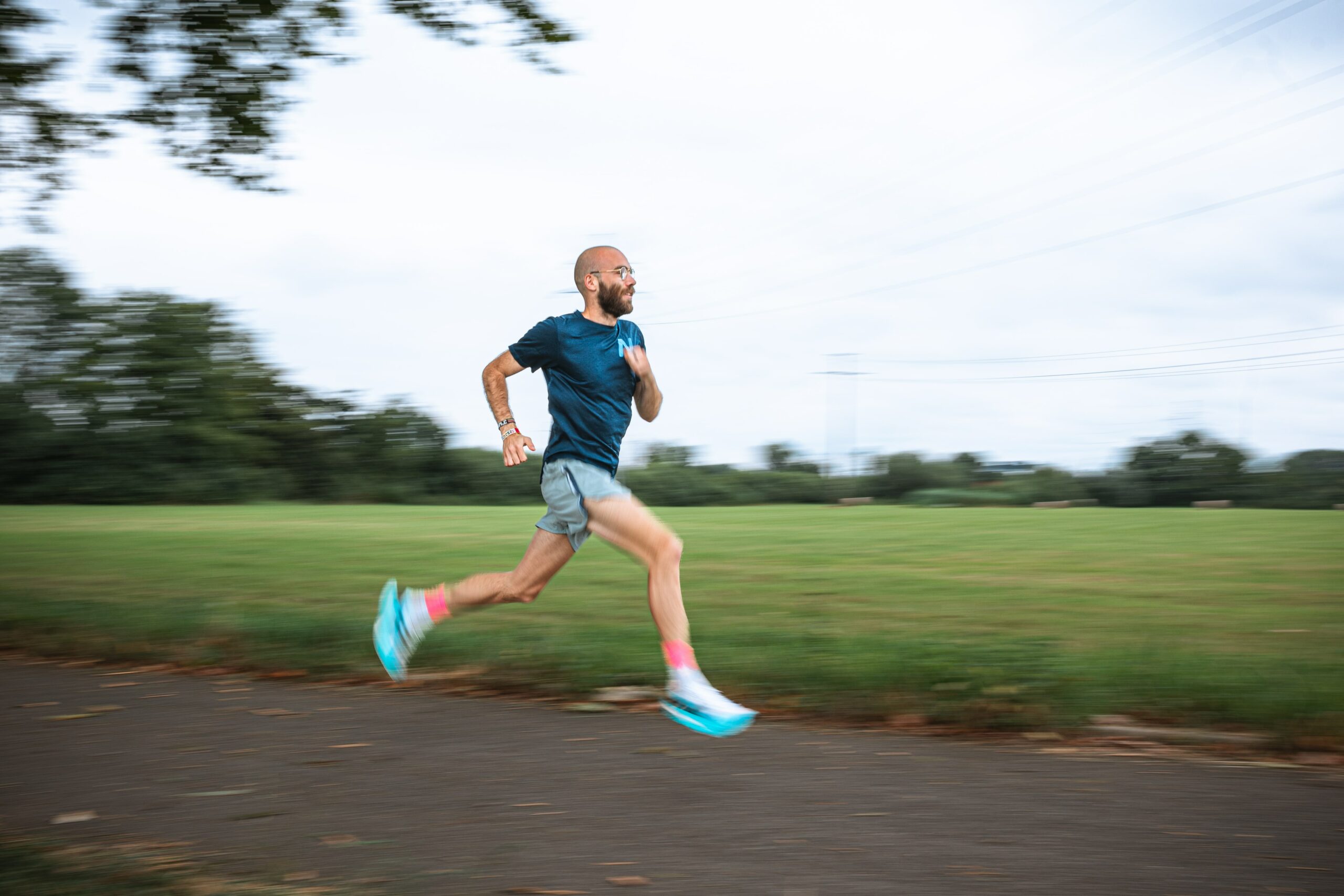

Fast training and road racing:
New Balance FuelCell SC Elite v4
(a team favorite 🩵)

Technical specifications :
- 223 grams
- 4 millimetre drop
- Carbon plate
- Selling price: €280
- Competitive distances: half-marathon and marathon

Muscle-saving, rebound sensation, comfort, lightness, durability and stability

High fare, lack of dynamism over a very short distance.
Read our full test & review :
New Balance FuelCell SC Pacer v2
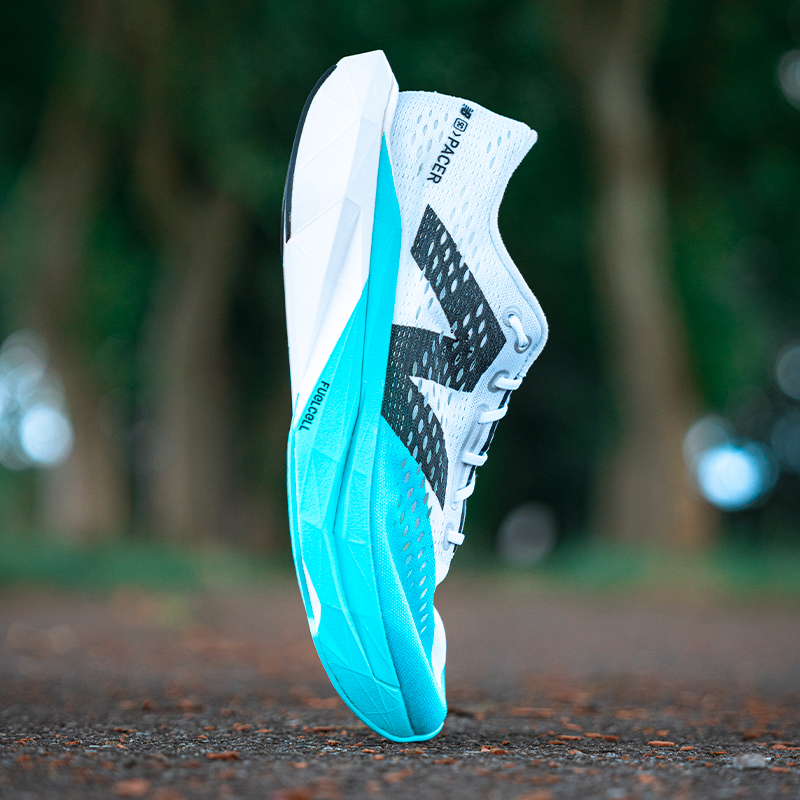
Technical specifications :
- 214 grams
- 8-millimeter drop
- Carbon plate
- Selling price: €200
- Use: short training sessions on track/road and in competition over 5 and 10 kilometers maximum

Lightweight, pronounced dynamism, breathability and precise shoe fit

Lack of grip on wet surfaces, low forward tilt
